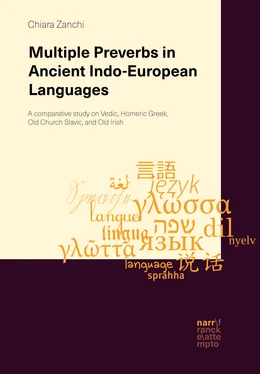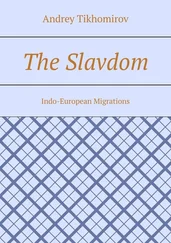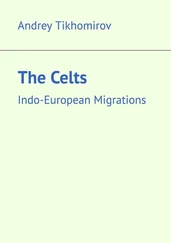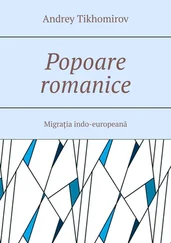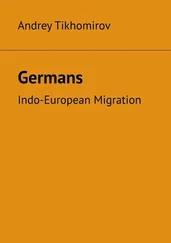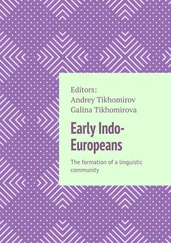In addition, the conceptualization of a motion event subsumes a trajectory, that is, the path covered by a TR with respect to a LM. However, the trajectory can either be profiled or remain in the base. For example, the Ancient Greek verbs pḗgnumi ‘fix’ and bállō ‘throw’ can take either the dative or the accusative, both expressing the direction of the motion. The dative and the accusative cases differ in their profile: the dative only profiles the endpoint of the trajectory, while the accusative profiles it as a whole.
Both location and motion events can involve the containment of the TR inside the LM, conceptualized as a container. As for location events, the TR can either be placed inside, near, or in contact with the LM (“ in essive”, “ ad essive”, and “ super essive” location, respectively). As regards motion events, the TR can move either toward the inside of a LM, toward its vicinity, or toward a contact position with the LM (“ il lative”, “ al lative”, and “ super allative” motion). Conversely, the TR can move from the inside of the LM, from its vicinity, or from a contact position with the LM (“ e lative”, “ ab lative”, “ super lative” motion, respectively). As discussed for examples (1) and (2), both spatial and metaphorical LMs can be conceived as containers: the Container metaphor is one of the most widespread means for shifting from the concrete to the abstract plane in conceptualizing events (Lakoff & Johnson 1980: 32ff.). The Container metaphor is based on the fact that the human body itself has its dimensionality and can be conceptualized as a container.
In contexts in which containment is not involved, contact instead can be relevant to identify the position of a TR with respect to a LM. The opposition based on contact is not expressed through morphological cases in Indo-European languages. However, in English as well as in ancient Indo-European languages, a number of preverbs-adpositions (cf. Chapter 3 on this terminology) in fact express this contrast: in English both on and over indicate that the TR is vertically located with respect to the LM, and differ only in the presence/lack of contact (Brugmann 1988); in parallel, for example, the basic meanings of Ancient Greek epí ‘on’ and hupér ‘over’ express superiority, the former involving contact, the latter lacking this implication (Luraghi 2003: 24).
Another relevant parameter is the “plexity” (in Talmy’s 2000: 177–254 terms) of the TR, of the LM and of the trajectory. TR and LM can consist of separate items (multiplex), or of a non-analyzable single entity (uniplex); in parallel, trajectory can be unidirectional (uniplex) or multidirectional (multiplex). Remarkably, the plexity is not an inherent feature of the participants in a spatial relation, but rather depends on how these participants are conceptualized. A further distinction only concerns multiplex entities: they can be either continuous or discontinuous. Discontinuous entities are typically plural count nouns, which profile the existence of a number of individuated entities; conversely, continuous entities are usually mass nouns and collectives, which profile an undifferentiated mass. Thus, discontinuous and continuous entities, as well as plural and mass nous, are distinguished only by their degree of individuation (Langacker 1987: 294).
2.2. Grammaticalization
2.2.1. A brief history of grammaticalization studies
At least since the early 19 thcentury, it has been a common observation that independent lexical items constitute the ultimate source for bound grammatical forms (e.g. Bopp 1816; Humboldt 1822; Wüllner 1831).1 However, Antoine Meillet was the one who presumably coined the term “grammaticalization”, which increasingly acquired more generally accepted usage in later research. Meillet (1912) described grammaticalization as the development of an autonomous word into a grammatical element, that is, as a linguistic change whereby lexical items enter the grammatical system.2 Meillet (1912: 140–141) later on compared the process of grammaticalization to a spiral: first, languages add non-obligatory elements to a given expression for the sake of intensification; then, these elements increasingly undergo semantic bleaching (i.e. they lose or reduce their meaning), lose their autonomy, and eventually enter the grammatical system. Further new expressive elements thereafter come into play and in turn undergo bleaching in a neverending cycle.3 Crucially for later research (cf. Section 2.2.3), Meillet assigned gradualness to grammaticalization: focusing on the French verb ‘to be’, he individuated different stages within its path from a lexical locative-existential verb ( je suis chez moi ‘I am home’), through a copula ( je suis malade ‘I am sick’), into a tense auxiliary ( je suis allé ‘I went’).
Building on Meillet’s ideas, Kuryłowicz (1975[1965]: 52) was among the first scholars to undertake new studies framed within the theory of grammaticalization. Kuryłowicz’s broadened definition of grammaticalization later became traditional: “Grammaticalization consists in the increase of the range of a morpheme advancing from a lexical to a grammatical or from a less grammatical to a more grammatical status, e.g. from a derivative formant to an inflectional one.” Thus, when grammaticalization takes place, not only must a previously lexical item enter the grammatical system, but also it becomes possible for a less grammatical item to acquire new and more grammatical functions.
Interest in Kurylowicz’s work on grammaticalization revived in the 1970’s, when Givón (1971, 1979) gave new life to grammaticalization studies, by stressing the fact that a language structure can only be understood in the light of its past (Givón, indeed, is the source of the famous slogan “today’s morphology is yesterday’s syntax”). However, works consistently framed within grammaticalization theory only started flourishing during the 1980’s (cf. Lehmann 1995[1982]; Heine & Reh 1982), and persist to the present (cf. among many others Heine, Claudi & Hünnemeyer 1991; Traugott & Heine 1991a, 1991b; Hopper & Traugott 1993; Heine 1997; Rissanen et al. 1997; and Fischer et al. 2000). In the last decades, however, grammaticalization theory also has undergone serious criticism (cf. Section 2.2.4).
2.2.2. Current approaches to grammaticalization
While undergoing serious criticism, the grammaticalization theory has also extended its traditional scope of application in different directions. While in the 20 thcentury the grammaticalization theory was mostly confined to grammatical, semantic, and pragmatic analyses carried out by functionally-oriented scholars from Europe and North America, it is now employed as a theoretical framework in phonology, language acquisition, and sociolinguistics, as well as in studies performed by formal linguists in regions including East Asia and South America (Narrog & Heine 2011: 2–3). This diversity had the consequence of multiplying the number of approaches to and definitions of grammaticalization (cf. Traugott 2010). One possible way to sort out these variations is by clustering the approaches into two main groups based on the inclusiveness/exclusiveness of grammaticalization.
The older and more restrictive approach to grammaticalization puts strong emphasis on the parameter of obligatorification (cf. e.g. Lehmann 1995[1982]; Haspelmath 2004), which implies reduction in transparadigmatic variability, increased dependency, and tightening of boundaries. Haspelmath’s (2004: 26) definition is often cited to exemplify this approach: “A grammaticalization is a diachronic change by which the parts of a constructional schema come to have stronger internal dependencies” (Haspelmath 2004: 26). Lehmann (2004: 155) also describes grammaticalization as a reduction of autonomy: “Grammaticalization of a linguistic sign is a process in which it loses in autonomy by becoming more subject to constraints of the linguistic system” (Lehmann 2004: 155). In both descriptive and theoretical literature on grammaticalization, this term is commonly understood in the narrow sense to denote a loss: loss of meaning, loss of phonology, and loss of independence.
Читать дальше
